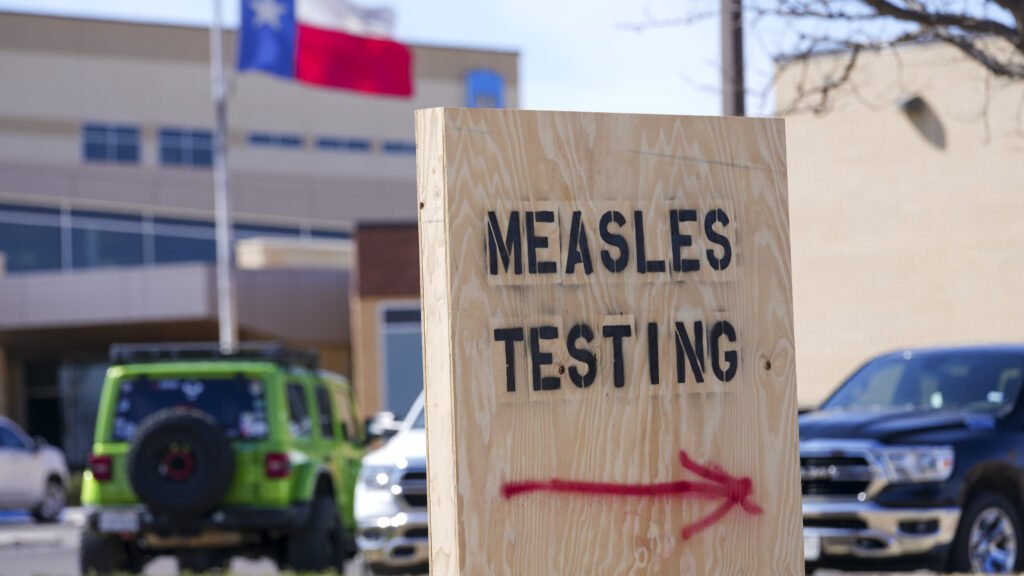The recent developments in the health and medicine field have been both concerning and promising. From the resignation of a top FDA vaccine official to the rising cases of measles in Texas, there is a lot to unpack in the world of public health.
Peter Marks’ resignation from his position at the FDA has raised alarm bells among public health experts, former FDA commissioners, and biotech executives. His departure, prompted by pressure from the Trump administration, has left many worried about the future of infectious disease containment. Marks cited the anti-vaccine agenda of Health Secretary Robert F. Kennedy as a major factor in his decision to step down, noting that this undermines confidence in vaccines at a time when measles outbreaks are on the rise across the U.S.
Speaking of measles outbreaks, Texas has seen a 20% jump in cases, with 400 identified cases as of Friday. This trend is mirrored in other states like New Mexico, Kansas, Oklahoma, and Ohio. The response from Health Secretary Robert F. Kennedy, including suggesting alternative treatments like vitamin A and cod liver oil, has raised concerns among public health experts. Recent federal cuts have impacted efforts to track and contain the spread of measles and other infectious diseases, further complicating the situation.
On a more positive note, the FDA has cleared an at-home test for three sexually transmitted infections (STIs) – chlamydia, gonorrhea, and trichomoniasis. This development is seen as a step forward in curbing the spread of STIs and providing easier access to testing and treatment. The test, designed for women, provides results within 30 minutes and can be purchased without a prescription.
In the realm of cardiovascular health, researchers have highlighted the differences between men’s and women’s hearts when it comes to heart attacks. While men typically experience chest pain, women may have more diffuse symptoms. This underscores the importance of understanding sex and gender differences in cardiovascular disease to improve diagnosis and treatment.
Lastly, the use of cadavers in medical school training is being phased out in favor of virtual reality and other visualization tools. While this shift may offer new educational opportunities, some worry that future doctors may miss out on the valuable experience of learning about death and reverence in the medical field.
Overall, these recent developments in health and medicine highlight the ongoing challenges and opportunities in public health and medical education. It is crucial for policymakers, healthcare providers, and the public to stay informed and engaged in efforts to improve health outcomes for all. The latest research on cardiac arrests during marathons and half-marathons reveals a stable incidence rate, even with a significant increase in the number of participants. With over 29 million competitors taking part in these races, triple the amount from previous studies, there were 176 reported cases of cardiac arrests. The majority of these incidents occurred among men, predominantly during full marathons and mostly after the 20-mile mark.
One of the main reasons for this change in incidence rates is attributed to the availability of CPR and AEDs (Automated External Defibrillators) on the race courses. Every runner who experienced a cardiac arrest received prompt resuscitation, and most had access to a defibrillator to restore their heart rhythm. This level of preparedness places race routes on par with locations like airports and casinos in terms of AED availability, ensuring that immediate medical assistance is readily available in case of emergencies.
In other news, Utah has become the first state to ban fluoride in public drinking water, a decision that has sparked debates on the potential health implications. Meanwhile, insurance executives have come forward with confessions that shed light on the inner workings of the industry, as detailed in a report by New York Magazine. The recent ouster of Peter Marks, a prominent figure in biotech, has raised concerns about the future of public health initiatives.
A chilling account in The Guardian recounts the story of a psychiatrist who put hundreds of women in deep, drug-induced comas, leaving a lasting impact on their lives. On a different note, President Trump has selected Fox News contributor Sara Carter as the next drug czar, a decision that has garnered attention and speculation within the healthcare community.
As the healthcare landscape continues to evolve, it is crucial to stay informed and vigilant about emerging trends and developments that impact public health and safety. By keeping abreast of these issues, we can work towards creating a more resilient and responsive healthcare system that prioritizes the well-being of all individuals.


